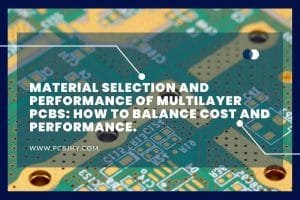
The Best Materials for LED PCB Boards
Learn about the critical factors in choosing PCB board materials for LED applications like thermal management, dielectric properties, manufacturability, and cost.

Learn about the critical factors in choosing PCB board materials for LED applications like thermal management, dielectric properties, manufacturability, and cost.

Learn how custom designed LED PCBs can enhance your LED lighting and products. Discover the many applications and benefits of using LEDs on PCBs.

Learn how using double sided PCB prototypes can accelerate your design process, allow for more complex boards, and reduce costs compared to single sided.

Double sided printed circuit boards provide unique benefits but also have some drawbacks to consider. Learn the key advantages and disadvantages before using them.

Discover the wide range of applications for double sided printed circuit boards and how they provide advantages over single sided PCBs.

Learn all about PCB Gerber Files, from their history and format to their generation, viewing, and manufacturing. Explore the limitations and potential improvements of

When designing a high-frequency PCB, choosing the right materials is crucial. Circuit board materials can have a significant impact on signal transmission speed, signal attenuation,

A custom PCB refers to a tailored PCB that is made according to the requirements of the product or project.

In this article, we will explore the materials used for multi-layer PCBs, performance considerations, and strategies for balancing cost and performance in material selection.

Multilayer PCBs have become an essential component of modern electronics, enabling designers to incorporate more functionality and higher complexity into smaller form factors.
Fill out the form below, and we will get back to you within the next 24
hours to complete the order, and then you’re all set to get started!